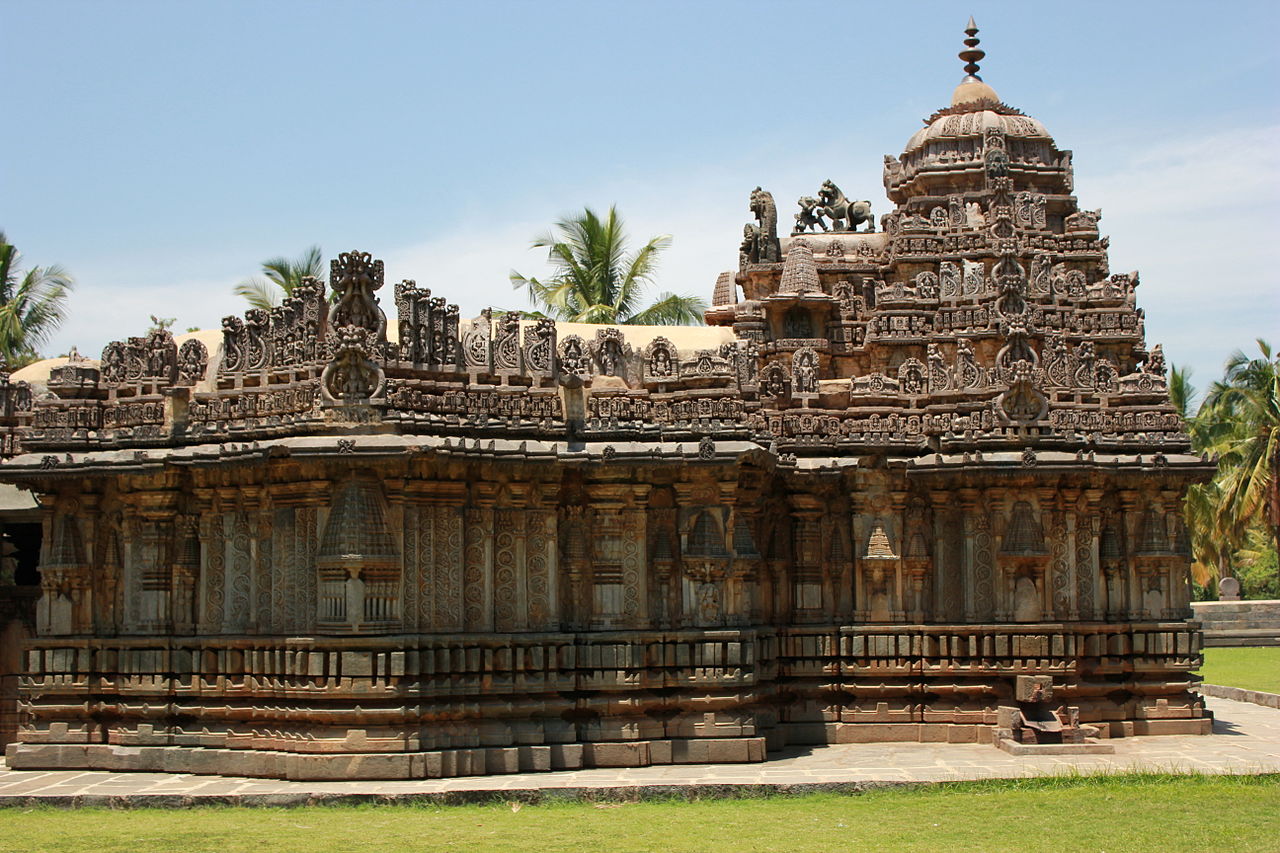- Visitor:77
- Published on:
Were Indians Uneducated Before the British Arrived?
Because we believe that the British gave us railways, roads, parliamentary democracy and much more, we also tend to believe that the Englishman made us educated and civilised. It is a common belief that before the advent of British colonial rule, most Indians were not very well educated or that education was limited to a few privileged Brahmins. But what do historical records say?

Read other articles in this series:
Part 2: Did Brahmins have Monopoly on Education?
Part 3: Was Gujarat Educated in 19th Century?
Part 4:One Teacher, One School – The Adam Report on Education in Bengal
Part 5: Did Schools Charge Fee in 19th Century?
In this series of articles, we will see how the traditional education system in India was described by the British themselves when they came to India. In the first part of this series, I will give a general background about these reports on indigenous Indian education. Each subsequent part of this series will focus on one region among Madras, Bombay, Bengal and Panjab in that order.
As the British expanded their dominions in India, political and administrative needs made it imperative for them to acquire more intimate information about their subjects. [1] Hence, systematic and meticulous surveys began to be commissioned, particularly as the East India Company assumed charge of educating the natives. By the third decade of the nineteenth century, a considerable number of official and unofficial surveys on indigenous education had been carried out in all the three presidencies of British India.
On 25th June 1822, the Governor-General of Madras, Sir Thomas Munro (r. 1814 – 1827) ordered the district collectors of his province to collect information on the state of village schools. Among other things, he directed the collectors to prepare “a list of the schools in which reading and writing are taught in each District showing the number of scholars in each and the caste to which they belong.” [2]
After four years, in a minute dated 10th March 1826, Munro summarised the results obtained from these enquiries on the state of native education in his presidency. [3] He concluded among other things that, “the state of education here exhibited, low as it is compared with that of our own country, is higher than it was in most European countries at no very distant period.” [4] [Emphasis mine] About the same time as enquiries on indigenous education were made in Southern India, the Governor-General of Bombay, Mountstuart Elphinstone (r. 1819-1827) gave orders to the Commissioner in Deccan and to the district collectors of Gujrat and Konkan to report on the state of education in their respective districts.
With a view to determining the “most advisable means to be adopted for the better education of the Native population”, the Government of Bombay in a letter dated 10th March 1824 asked officials to furnish information on the number of village schools in their respective Zillahs, the allowances granted to schoolmasters etc. [5] But Elphinstone believed right from the outset that the colonial state had to radically reform native schools. [6] According to him, it was no use to teach people to read if their studies were “to be confined to legends of Hindoo gods.” [7]
Therefore, even before he had ordered enquiries, Elphinstone devised an elaborate scheme of reforming the indigenous system. His plans consisted of imposing regular superintendence, increasing the number of schools, supplying ‘useful’ and ‘moral’ books, training school masters, diffusing European knowledge etc. [8] In many ways, therefore, he anticipated the new educational machinery that was to be formally established by the state in 1854.
A similar story unfolded in Bengal, where William Adam was appointed by the Bentinck government in 1835 to undertake an enquiry into the nature of indigenous institutions. [9] Adam conducted three surveys and finally published his final report in 1838. Like many of his contemporaries, Lord William Bentinck (r.1828-1835), the Governor-General of Bengal believed in the “universally accepted axiom that education (English education) and the knowledge to be imparted by it can alone effect the moral regeneration of India.” [10]
Nonetheless, Bentinck wanted to know the “actual state of Native education” so that government aid and assistance could be accordingly given in the most effective manner. So, the government’s ultimate object in conducting enquiries was to utilise and assimilate indigenous institutions in the state machinery. In addition, Bentinck’s motive in sanctioning the surveys stemmed from the need to “ascertain the exact nature and extent of the popular wants” before venturing to extend the government educational plans “from town to country, from the few with whom the European society are in direct communication to the body of the people.” [11]
 Considering the wide scope of the colonial surveys, it is hardly surprising that these surveys revealed rich details about the nature of indigenous institutions. On many an occasion, the colonial survey brought to light a wide range of curricular and pedagogical practices followed in indigenous schools. Dharampal’s The Beautiful Tree contains select extracts from the educational surveys conducted in Madras (1822-26), Bombay (1824 -25), Bengal (1835-38) and Punjab (1882). In particular, the Madras surveys were analysed in detail by Dharampal who drew inspiration from Mohandas Gandhi (1869-1948). [12]
Considering the wide scope of the colonial surveys, it is hardly surprising that these surveys revealed rich details about the nature of indigenous institutions. On many an occasion, the colonial survey brought to light a wide range of curricular and pedagogical practices followed in indigenous schools. Dharampal’s The Beautiful Tree contains select extracts from the educational surveys conducted in Madras (1822-26), Bombay (1824 -25), Bengal (1835-38) and Punjab (1882). In particular, the Madras surveys were analysed in detail by Dharampal who drew inspiration from Mohandas Gandhi (1869-1948). [12]
The results and findings of colonial surveys mentioned in The Beautiful Tree will be discussed in detail later in the subsequent parts of this series of articles. Following the publication of Dharampal’s work, several scholars have researched about the nature of indigenous education. As a result, recent scholarship has unraveled hitherto unknown aspects of Indian indigenous schools. For instance, D. Senthil Babu has highlighted the interconnections between mathematics, music and memory in Tamil indigenous schools. [13] In his fascinating work, Babu shows how traditional learning was dynamic and deeply rooted within the cultural ethos of the local communities. In the next part of this series, I will highlight some select British reports from the Madras presidency.
Notes and References
- “By 1820s the Raj was already based far more on direct observation and measurement in the Indian countryside than on the citation of Sanskrit texts […] the production of such knowledge continued to flourish as part of a larger positivist enterprise that sought empirically verifiable information about all societies everywhere.” Thomas Metcalf, Ideologies of the Raj (The New Cambridge History of India, III.4), rev. ed. (1998; Cambridge University Press, 2013), 26.
- “Minute of Governor Sir Thomas Munro ordering Indigenous Education: 25.6.1822.” In Dharampal, The Beautiful Tree (New Delhi: Biblia Impex, 1983), 83-84. For an overview of the returns furnished by the collectors, see ibid. 88-227.
- “Minute, dated the 10th March, 1826, by Sir Thomas Munro.” in Henry Sharp, Ed. Selections from Educational Records Part I (1920; repr., New Delhi: Government of India Press, 1965).
- Ibid.
- “Extract from Bombay Secretariat Records, G.D. Volume 63 of 1824, 333-340,” in R.V. Parulekar, Ed. Survey of Indigenous Education in the Province of Bombay (Bombay: Asia Publishing House, 1945), 179-181. For an overview of the results of these enquiries, see ibid. 1-195.
- “I have attended, as far as in my power since I have been in Bombay, to the means of promoting education among the natives, and from all that I have observed, and learned by correspondence, I am perfectly convinced that without great assistance from Government no progress can be made in that important undertaking.” See Extract of “Minute by the Hon. Mountstuart Elphinstone, Governor of Bombay, dated December 13, 1823.” In A.N. Basu, Ed. Indian Education in Parliamentary Papers (New Delhi: Institute of Education, 1952), 197.
- Ibid. 200-204.
- Ibid. 198-200.
- See ‘Minute by his Excellency the Governor-General, dated Calcutta, the 20th January, 1835’, in “Introduction”, Anathnath Basu, Ed. Reports on the State of Education in Bengal (Calcutta University Press, 1941), lxiv-lxvii.
- Ibid.
- Charles Trevelyan, On the Education of the People of India (London: 1838), 34-35. Charles Trevelyan (1807 – 1886) was a young British civil servant who became an influential member of the Education Council in India during the administration of Bentinck.
- In 1931 at Chatham House in London, Gandhi had remarked: “the British administrators instead of looking after education and other matters which had existed began to root them out. They scratched the soil and began to look at the root, and left the root like that and the beautiful tree perished.” See Mahatma Gandhi, (1869-1948), The Collected Works of Mahatma Gandhi, vol. 54 (New Delhi: Publications Division, Ministry of Information and Broadcasting, Govt. of India, 2000), 53-66.
- Senthil Babu, “Memory and Mathematics in the Tamil tinnai schools of South India in the Eighteenth and Nineteenth Centuries”, International Journal for History of Mathematics Education, vol. 2, no. 1, (2007), 15-37.
- 38 min read
- 0
- 0










